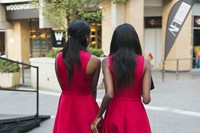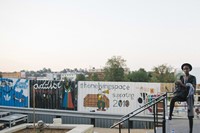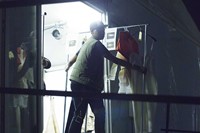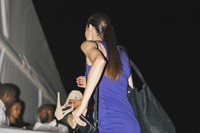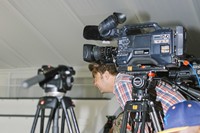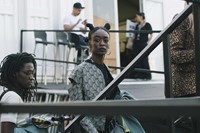AnOther gets swept away on a sea of excitement, possibility and vibrant print at Mercedez-Benz Fashion Week Africa in Johannesburg
After making your way past bloggers and posers, shopping malls and sponsors to one of the world's many fashion weeks, it's sometimes easy to slump into your seat, thinking fashion couldn't matter less. But in South Africa, exactly 20 years after the end of Apartheid, it's obvious that clothing plays a hugely important socio-political and cultural role in the young democracy.
To the outsider, the sartorial chasm between white and black is striking, even when the two groups are mixed together in the same room. At their most vibrant, South Africans on the street can dapper up to an extent that would make Sapeurs jealous, draw on global hip-hop culture, or don the shapes and colours of traditional African dress. Or often, they creatively mix all three.
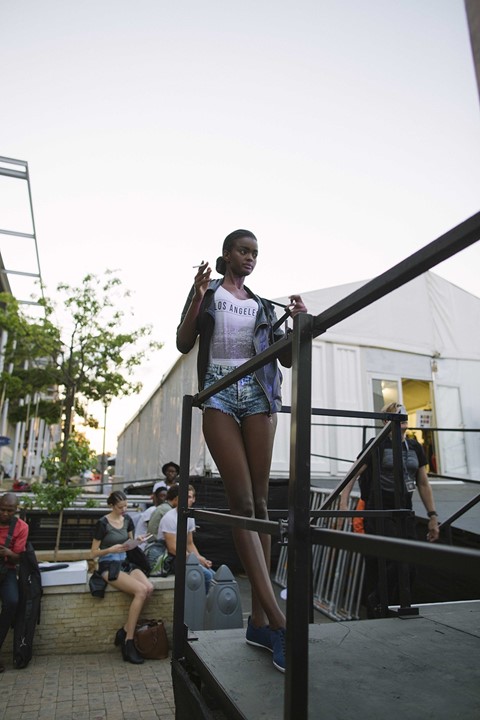
But to South Africans, clothing has been the site of cultural divergence and cross-pollination. "In the new South Africa, race has come to determine fashion less and less," says Jamal Nxedlana, the 29-year old designer behind fresh label MISSHAPE. "As policies of segregation loosened, fashion and styles in South Africa started to cross racial, social and cultural barriers, resulting in the newly developing post-subcultural styles now emerging."
Africa is not a trend
Mercedez-Benz Fashion Week Africa, one of the continent's best and largest showcases for designers from all over Africa, undulates around the same critical questions common to most fashion weeks in emerging countries. How much of the goal is to sell abroad, and how much is to convince Africans to buy local rather than European? How much of this collection or season is a conscious projection of African themes, or how much is simply global fashion with African roots, that studiously avoids anything that might be considered stereotypical? Which is the "real" South Africa fashion week and why must small events compete rather than unite (this is frustratingly common worldwide)? How much is the event geared towards the conservative elite market in an unequal country (South Africa is still one of the world's most unequal large countries, and this hasn't improved one bit since 1994), and how much is more of a young and edgy aesthetic that could work on the streets of Tokyo or São Paulo?

The most recent MBFWA, two weeks ago, has seen the event turn towards a loud affirmation of re-imagined African culture, and a younger more global style, away from its early days dominated by evening gowns. "'African fashion' started as an aesthetic: prints and beadwork defined the 'look' and this allowed the global fashion community to reduce African fashion to a trend – Africa is not a trend. Today, is is about re-imagining heritage," says Kyle Boshoff, Creative Director for MBFWAfrica.
"Ultimately, designers from the continent and diaspora have a story to tell that is rooted in Africa, but today there is a global audience... The world also needs to appreciate that Africa is not one heritage – we are made up of 54 different countries, each with a melting pot of cultures."
"The world needs to appreciate that Africa is not one heritage" — Kyle Boshoff
Laurence Airline
Boshoff points, as anyone would, to Paris-based Ivorian designer Laurence Chauvin-Buthaud and her Laurence Airline label, whose bold and refined Datura AW14/15 menswear show wowed audiences in Joburg this year. Shirts and oversized coats in mostly dark blues featured flashes of orange stripes or floral prints.
Chauvin-Buthaud says she created it for "globetrotting dandies" and "literal and figurative explorers" – which is fitting, as her coats could work as well on a cheeky male or female 21st century central European aristocrat as a playful fisherman with serious practical needs. She was inspired by "1970s flower power prints – West Africa version, Le Corbusier's architecture and Abidjan's L'Hôtel Ivoire," the latter reflected in small squares and perpendicular lines in colours mostly submerged between the ubiquitous bright orange.
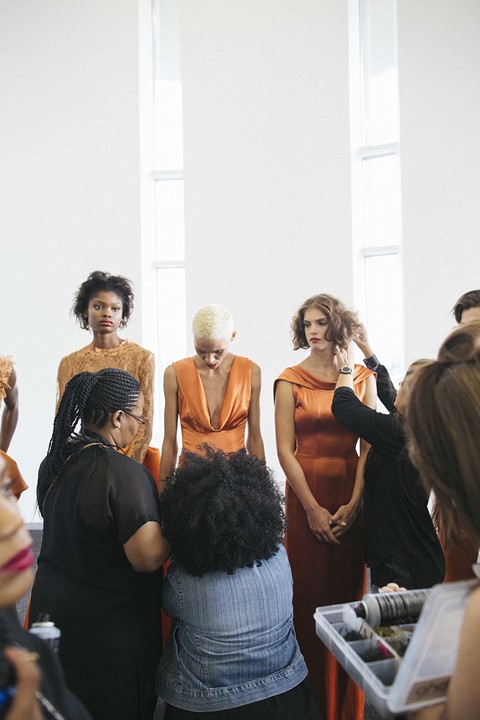
Ghana to Italy
"It's been a long time since I've been excited like that by clothes," said one London-based buyer, planning a shop in Lagos after seeing Ghana-based Aisha Obuobi's collection. She stayed true to a now well-known feminine aesthetic while catering to a more cosmopolitan – the word "Afropolitan" has been used – unisex modernity, with slouchy, relaxed silhouettes on skirts, dresses and blouses. The colours, though, shout out in a way that feels uniquely feminine and refreshingly aggressive.
But is African print a trend?
"African print is so big right now," said a Joburg local organising some of the week's events at shops downtown. It was quickly agreed that this predominance – if not exactly on the runways, but around the country – had something to do with Burberry's take on the concept, which, if you look at it closely enough, makes as much linguistic sense as "European cuisine."
It took Marianne Fassler, then, who some in Joburg have called a kind of a South African Westwood in terms of longevity and hippie-punk approach, to show how different these prints could be. She threw all of them on top of the same model, each clashing more loudly than the other in an intentionally maximalist celebration of the sometimes violent and beautiful mix that Africa can be.
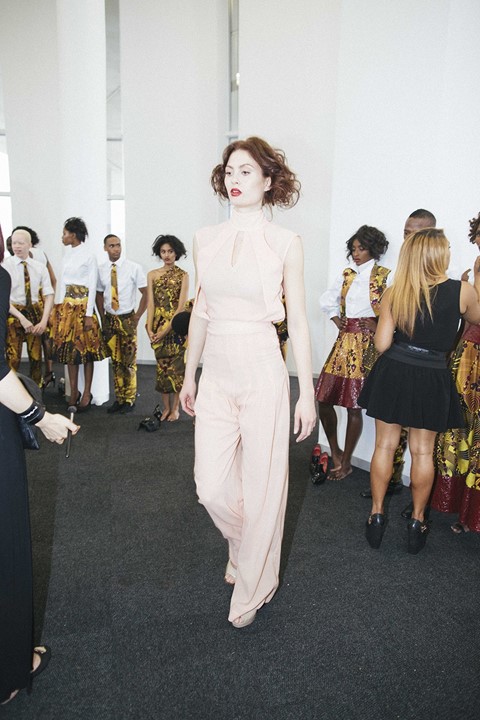
"Where I grew up there were eight tribes just in my neighborhood alone," said David Tlale, who is one of South Africa's few designers to show abroad. "I can speak seven African languages. Africa has a story to tell now, and it's about the interaction of cultures."
Zulu and Xhosa
South Africa's most spoken primary language is Zulu, which is most dominant in Joburg. But just behind is Xhosa, predominant in the regions around Capetown, from whose culture MaXhosa by Laduma draws its geometric designs, and where he has taken a sustainable approach to its globally dominant Mohair industry. This year it was casual knits and wraps, separates, cardigans and sweaters. "There's a reason he's called the Missoni of Africa," Boshoff said.
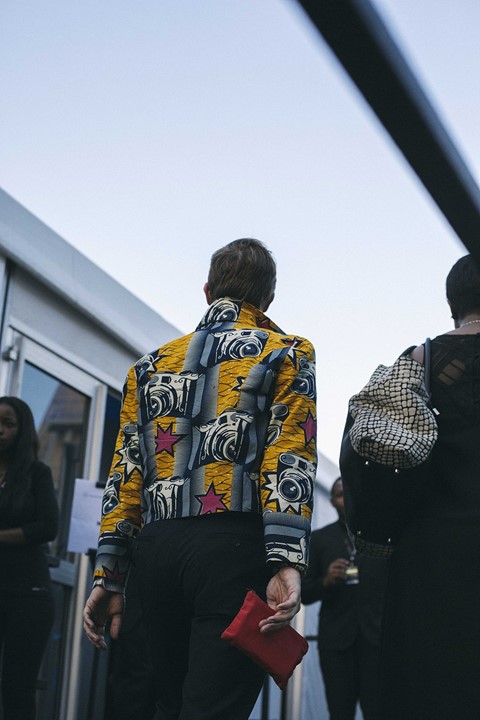
African fashion is too big to fit here. Check out all the other designers and full photos from all the shows here.
Words by Vincent Bevins

